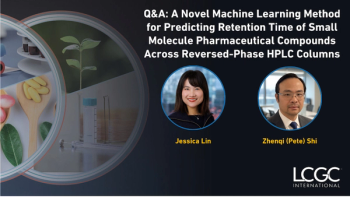
Micellar Liquid Chromatography for Insecticide Removal
Dr. Harisingh Gour University scientists recently used micellar liquid chromatography to test how effectively different washing techniques remove insecticides.
A recent study led by scientists from Dr. Harisingh Gour University in Sagar, India used micellar liquid chromatography (MLC) to test the effectiveness of different household washing techniques in removing insecticides from spinach and chickpea leaves. Their findings were published in the Journal of Chromatography A (1).
In this study, micellar liquid chromatography (MLC), which is a type of liquid chromatography that utilizes micelle particles in the mobile phase to separate and analyze different compounds, was validated and applied for the determination of monocrotofos (MCF), imidacloprid (ICP), dimethoate (DM) and profenofos (PFF) pesticides in spinach and chickpea leaves (2). According to the scientists, MLC “generates very low toxic waste compared to traditional chromatographic pesticide detection methods,” which is why it was used in this experiment (1).
Vegetables are viewed as “protective foods” in human diets (1) because of various health benefits. The World Health Organization (WHO) recommends that at least 400 g of fruits and vegetables should be consumed to meet the recommended daily allowance (RDA) of nutrition, whereas the American Dietary Guidelines recommend five daily servings of vegetables equivalent to 2000 calories of daily intake. Crop diversity and the nutritional value of vegetables is important for improving food and its nutrition.
Spinach and chickpea are two different varieties of green leafy vegetables (GLVs); like other GLVs, they can be attacked by pests, insects, weeds, and other predators. Pesticides and insecticides are typically used to get rid of these pests, but if consumed by humans, these substances can cause severe neurological, reproductive, respiratory, cardiac, and carcinogenic health issues. Due to increasing awareness about the harmful effects of pesticides/insecticides, regulatory authorities have fixed the maximum residue limit (MRL) for pesticide application on crops, or the legally tolerable level of pesticide in food that comes under good agricultural practices.
For this study, the optimized mobile phase was 0.065 M SDS-2% 1-propanol, 0.01 M NaH2PO4 buffered to pH 7. A C18 column was used for separation with a flow rate of 1 mL/min. The developed method has been validated following the guidelines of SANTE/11,312/2021 and ICH guidelines for; limit of quantification (0.05–0.20 mg/kg), linearity (r2> 0.997–0.999), precision (< 6.3%), accuracy (96.3%–99.8%) and robustness (< 6) in real samples. ICP and MCF, apart from DM and PFF, were detected in the present work. After detecting insecticides in various spinach and chickpea leaves, both types of samples were washed with different household chemicals: namely, normal, lukewarm, common salt, lemon juice water and commercial ozonizer. Based on five washing techniques with insecticide concentration time intervals, reduction rates were calculated for each washing treatment.
The results show that lemon juice, common salt water, and ozonizer can be used as washing techniques for the reduction of superficial and systematic residues of ICP and MCF. Common salt and lemon juice water were better for washing compared with vinegar and potassium permanganate (KMnO4). Salt and lemon juice water can be a more affordable alternative to other household chemicals like vinegar, the scientists wrote.
References
(1) Bhamdare, H.; Pahade, P.; Bose, D.; et al. Evaluating the Effectiveness of Different Household Washing Techniques for Removal of Insecticides from Spinach and Chickpea Leaves by Micellar Liquid Chromatography. J. Chromatogr. A 2024, 1730, 465043. DOI:
(2) Micellar Liquid Chromatography. Elsevier B.V. 2024.
Newsletter
Join the global community of analytical scientists who trust LCGC for insights on the latest techniques, trends, and expert solutions in chromatography.




